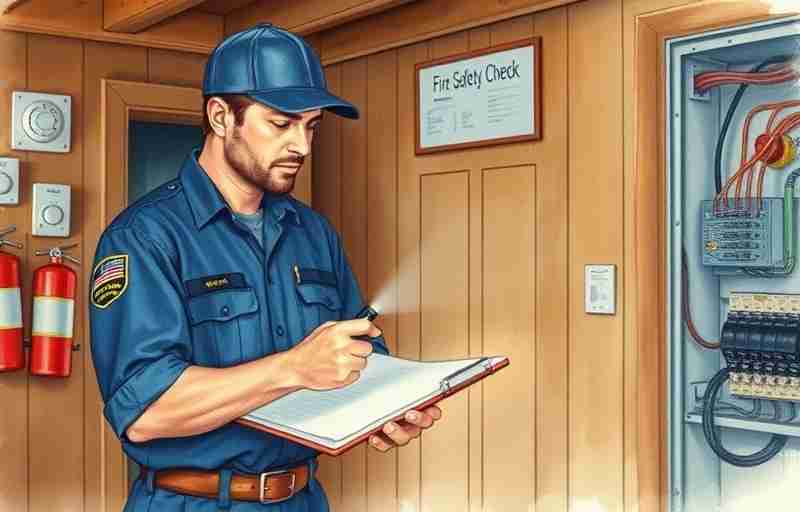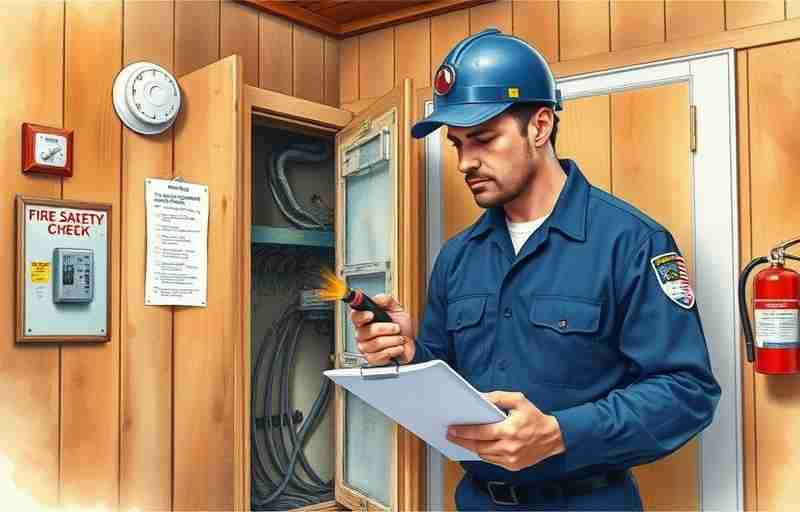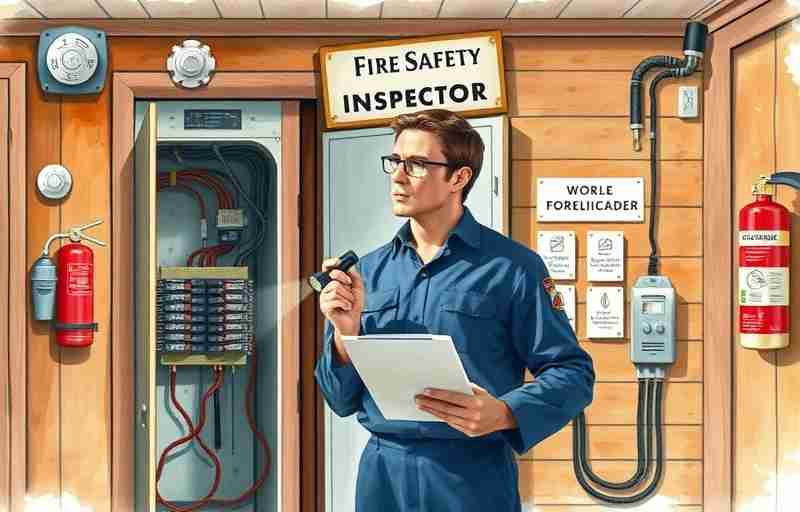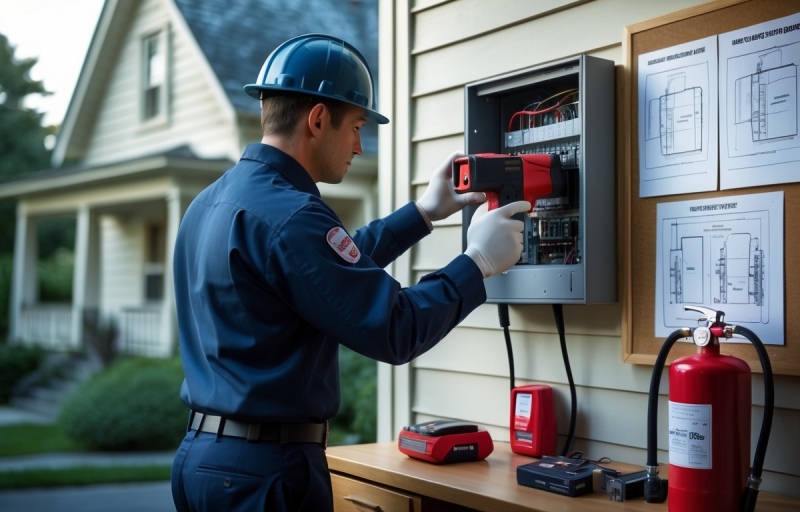Older homes carry a unique charm and character, but they also come with increased risks—especially when it comes to fire safety. Understanding how to prevent fire damage in older homes is essential for protecting your family, property, and cherished memories. Aging electrical systems, outdated wiring, and lack of modern fire prevention features can all contribute to a higher risk of fire. At COMMITTED TO QUALITY SERVICE, we specialize in fire damage restoration and are here to help you safeguard your home with expert advice and fast, friendly, and professional service. Whether you’re dealing with water damage or fire damage, our team is equipped with the latest tools and techniques to restore your home efficiently. Call us now at 855-933-7935 to learn more about how we can help you prevent costly damage and ensure your home remains safe and secure.
Inspect and Upgrade Electrical Systems

Older homes often come with outdated electrical systems that may not meet modern safety standards, significantly increasing the risk of fire. Ensuring your electrical infrastructure is up to date is a crucial step in fire prevention. According to the National Fire Protection Association (NFPA), electrical failures or malfunctions are a leading cause of home fires, accounting for approximately 13% of all residential fire incidents.
Begin by hiring a licensed electrician to conduct a thorough inspection of your home’s wiring, outlets, and circuit breakers. Look for signs of wear such as frayed wires, flickering lights, or frequently tripped breakers. These could indicate underlying issues that need immediate attention.
“Homes built before 1970 often lack the capacity to handle today’s electrical loads, making upgrades not just beneficial, but essential.” — U.S. Fire Administration
Upgrading to modern circuit breakers, installing ground fault circuit interrupters (GFCIs), and replacing aluminum wiring with copper can drastically reduce fire risks. Additionally, ensure that your home has enough outlets to avoid overloading extension cords or power strips.
- Replace outdated fuse boxes with modern breaker panels.
- Install arc fault circuit interrupters (AFCIs) to detect dangerous electrical arcs.
- Use tamper-resistant outlets to prevent accidental shocks or fires.
For more information on protecting your home from fire hazards, visit our fire damage and services pages. You can also explore our expert tips on identifying risks early in our blog.
For additional guidance, check out the NFPA’s resources on electrical safety: https://www.nfpa.org/Public-Education/Fire-causes-and-risks/Top-fire-causes/Electrical.
Install Smoke Detectors and Fire Alarms
One of the most effective ways to prevent fire damage in older homes is by ensuring that smoke detectors and fire alarms are properly installed and maintained. These devices serve as early warning systems, alerting occupants to the presence of smoke or fire before it becomes uncontrollable. Older homes often have outdated electrical systems or materials that are more susceptible to fire, making early detection even more critical.
Install smoke detectors in every bedroom, outside each sleeping area, and on every level of the home, including the basement. For optimal safety, consider interconnected alarms that sound simultaneously when one is triggered. Regularly test each unit and replace batteries at least once a year. Additionally, replace the entire unit every 10 years to ensure reliability.
Professional installation can help ensure that alarms are placed in the most effective locations. If you’re unsure about the condition of your home’s fire safety systems, consult a restoration expert. Learn more about our comprehensive services designed to protect your home from fire and other hazards.
For more tips on maintaining a safe home environment, visit our blog. Taking proactive steps like installing smoke detectors not only safeguards your property but also protects the lives of your loved ones. Don’t wait until it’s too late—make fire safety a priority today.
Maintain Heating Equipment and Chimneys

Older homes often rely on traditional heating systems such as fireplaces, wood stoves, or outdated furnaces, which can pose serious fire hazards if not properly maintained. Regular inspection and cleaning of chimneys and heating equipment are essential to prevent the buildup of creosote—a highly flammable substance that accumulates in chimney walls. Scheduling annual professional inspections ensures that any cracks, blockages, or wear in the system are identified and repaired before they become dangerous.
In addition to professional maintenance, homeowners should also check for signs of malfunction, such as unusual odors, smoke backdrafts, or inconsistent heating. Installing carbon monoxide detectors near heating appliances adds an extra layer of safety. It’s also wise to keep flammable materials, such as furniture or curtains, at a safe distance from heat sources.
If you’re unsure about the condition of your heating system, consider consulting experts who specialize in fire prevention and home restoration. Learn more about our comprehensive services designed to protect your property. For more tips and expert advice, visit our informative blog.
By taking proactive steps to maintain your heating equipment and chimneys, you significantly reduce the risk of fire damage and ensure a safer living environment in your older home.
Replace or Repair Faulty Wiring

One of the most critical steps in preventing fire damage in older homes is addressing outdated or faulty electrical wiring. Over time, wiring systems can deteriorate, become overloaded, or fail to meet modern safety standards. These issues significantly increase the risk of electrical fires, especially in homes built before the 1980s. Warning signs such as flickering lights, frequently tripped circuit breakers, or a burning smell near outlets should never be ignored.
Hiring a licensed electrician to inspect your home’s electrical system is essential. They can identify worn-out wires, outdated fuse boxes, or improperly grounded circuits that need immediate attention. In some cases, a full rewiring may be necessary to ensure your home meets current safety codes. This investment not only protects your property but also enhances its overall value and functionality.
In addition to electrical upgrades, it’s wise to stay informed about other potential hazards in older homes. Explore our blog for expert tips and updates on home safety. If you’re unsure where to start, our team is here to help—visit our contact page to schedule a consultation or ask questions.
Taking proactive steps today can prevent devastating fire damage tomorrow. Don’t wait until it’s too late—ensure your home’s wiring is safe and up to date.
Use Fire-Resistant Building Materials
When it comes to protecting older homes from fire damage, one of the most effective strategies is upgrading to materials that resist ignition and slow the spread of flames. Traditional building materials in older homes, such as wood siding, outdated insulation, and untreated roofing, are highly flammable and can significantly increase the risk of fire-related destruction. Replacing these with fire-resistant alternatives like fiber cement siding, metal roofing, and fire-rated drywall can greatly enhance your home’s safety.
These modern materials not only provide better protection but also comply with current fire safety codes. For example, fire-resistant insulation can prevent flames from spreading through walls and attics, while tempered glass windows can withstand higher temperatures and reduce the chance of breakage during a fire. Investing in these upgrades is a proactive step toward minimizing potential fire hazards.
Additionally, consulting with professionals who specialize in fire restoration can help you identify the most vulnerable areas of your home. At Projekt Restoration, we offer a range of services designed to improve home safety and resilience. Learn more about our commitment to safety and excellence by visiting our mission page.
Taking the time to upgrade your home with fire-resistant materials not only protects your property but also provides peace of mind for you and your family.
Create a Fire Escape Plan
Having a well-thought-out fire escape plan is essential for protecting your family and minimizing fire damage, especially in older homes where structural vulnerabilities may exist. Start by identifying all possible exits in your home, including windows and secondary doors. Ensure that each family member knows at least two ways to exit every room. Practice fire drills regularly to reinforce the plan and reduce panic during an actual emergency.
Older homes may have outdated layouts or blocked exits, so it’s crucial to assess and clear all escape routes. Install smoke detectors in every room and test them monthly to ensure they are functioning properly. Assign a safe meeting point outside the home where everyone can gather after escaping. This helps emergency responders know if anyone is still inside.
Additionally, keep hallways and staircases free of clutter to allow for a quick evacuation. If your home has multiple floors, consider installing escape ladders in upper-level rooms. For more tips on protecting your property, visit our blog or explore our comprehensive services designed to help homeowners prepare for and recover from fire-related incidents.
Being proactive with a fire escape plan not only saves lives but also reduces the risk of extensive damage. Taking these steps today can make all the difference in an emergency tomorrow.
Keep Flammable Items Away from Heat Sources
In older homes, the risk of fire damage increases due to outdated wiring, aging appliances, and limited fire-resistant materials. One of the simplest yet most effective ways to reduce this risk is by ensuring that flammable items are kept at a safe distance from heat sources. Common household items such as curtains, paper products, cleaning supplies, and even certain types of furniture can ignite easily if placed too close to heaters, stoves, or fireplaces.
To enhance safety, always maintain a minimum clearance of at least three feet around any heat-producing appliance. Avoid storing items like aerosol cans, cooking oils, or alcohol-based products near heat sources, as they can combust quickly. Regularly inspect your home for potential hazards and rearrange items as needed to maintain a safe environment.
Older homes may also lack modern fire safety features. Consider consulting professionals to assess your property and recommend upgrades. For more information on how we can help protect your home, visit our services page. You can also explore our fire damage solutions to learn how we handle restoration after an incident.
Taking these simple precautions can significantly reduce the chances of fire damage and help preserve the charm and safety of your older home.
In conclusion, preventing fire damage in older homes requires a proactive and informed approach. By understanding the unique risks associated with aging structures—such as outdated wiring, lack of modern fire safety systems, and flammable building materials—homeowners can take targeted steps to enhance safety. Regular inspections, upgrading electrical systems, installing smoke detectors and fire extinguishers, and practicing safe habits all play a vital role in reducing fire hazards. With proper maintenance and vigilance, you can preserve the charm and character of your older home while ensuring it remains a safe and secure place for you and your loved ones.

